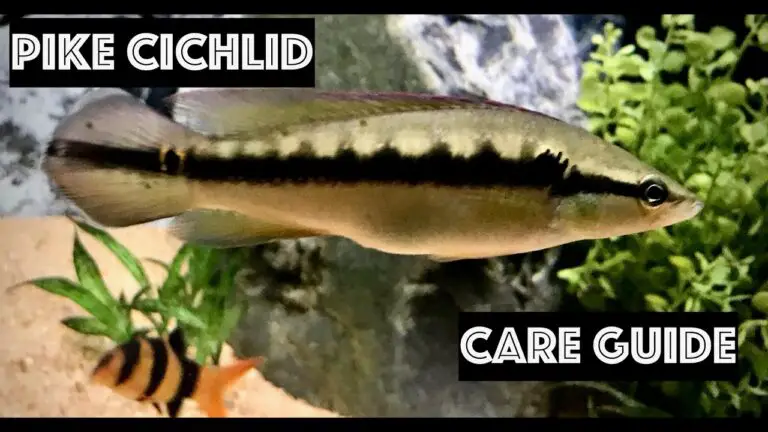Texas Cichlid: Navigating the Bold Territory of the Proud and Robust Species
The world of cichlids is one teeming with diversity and color—a tapestry of fascinating aquatic life where the Texas Cichlid (Herichthys cyanoguttatus) stands out as a proud and exceptionally robust variety. With its vibrant appearance and unique behavioral traits, this species has captured the hearts of fish enthusiasts and breeders worldwide. In this detailed exploration, we’ll venture into the domain of the Texas Cichlid, uncovering everything from its natural habitat to the intricacies of keeping and breeding these magnificent creatures.

Texas Cichlid Habitat and Behavior
The Limestone Basses’ Texan Playground
Named for its native habitat in both the United States and northern Mexico, the Texas Cichlid thrives in rivers with slow-moving waters and a tapenade of substrate, sometimes featuring limestone. It’s not just the texture of the environment that’s appealing to this fish; rather, the water’s steady temperature and relatively stable ecosystem make for an ideal home.
At home, the Texas Cichlid rules with a fair but firm fin. They are known to be protective of their territories, especially during the breeding season, often challenging intruders with displays of color and aggression. Males are particularly territorial, marking and defending caves for nesting, while females act as the primary caregivers.
Behavior Traits and Social Interactions
These cichlids exhibit a complex social structure angled towards a dominant-pair system, common among cichlids. When it comes to interaction, Texas Cichlids are not shy; in fact, they are quite the opposite. They are known to be relatively assertive and can become quite aggressive if they feel their dominance is being challenged.
However, their boldness and territorial nature shouldn’t deter owners from keeping them in community tanks, albeit with some caution. If given enough space and the right tank mates, Texas Cichlids can share their space without becoming overly aggressive.
Caring for Texas Cichlids
Tank Setup and Maintenance
Creating an environment that mimics the Texas Cichlid’s natural habitat is paramount for their health and well-being. A tank size of at least 55 gallons for a single cichlid is recommended, with additional space for territories if more than one is kept. The substrate should be fine gravel or sand, and the tank should be decorated with rocks and driftwood to provide hiding spots and mimic their natural environment.
Water quality is a top priority when caring for Texas Cichlids. Regular water changes and filtration are crucial to keep the environment stable and free of harmful toxins. Keep the pH levels between 6.5 and 8.0, and maintain the water temperature around 75-82°F to replicate their natural habitat.
Suitable Diet and Feeding Habits
In the wild, Texas Cichlids are omnivores, feeding on a variety of small crustaceans, plants, and smaller fish. In captivity, their diet should be just as varied. High-quality cichlid pellets, frozen and live brine shrimp, bloodworms, and insect larvae can satisfy their nutritional needs.
Feeding should occur 2-3 times a day, but be wary not to overfeed. Overfeeding can lead to health issues and deteriorate water quality. Monitor your cichlids’ eating habits and adjust the feeding schedule as necessary to maintain their health.
Health Considerations and Common Issues
Like all fish, Texas Cichlids are susceptible to certain health issues. Watch for common symptoms of illness such as changes in coloration, loss of appetite, or strange swimming behaviors. Ensure they have a balanced diet, suitable tank conditions, and a proper tank setup to mitigate the risk of diseases.
Also, quarantine new fish before introducing them to the main tank to prevent the spread of any potential illnesses. Have a basic understanding of fish health and treatment, and consult a vet specializing in aquatics if serious issues arise.
Breeding Texas Cichlids
Breeding Behaviors
The breeding ritual of the Texas Cichlid is a spectacular sight to behold. Male cichlids will create and fiercely guard their territories, often in caves or under overhangs. Females will lay eggs, and the male will fertilize them. After spawning, the female Texas Cichlid will continue to care for the eggs, while the male guards the surrounding area.
Breeding can be facilitated by simulating changes in the water and environment. Raising the temperature slightly and providing more places to build a nest can encourage breeding behaviors. Once bred, these fish engage in substantial parental care, which often leads to successful fry survival.
Caring for Fry and Ensuring Successful Breeding
The parents’ devotion to the fry is a crucial factor in ensuring successful breeding of Texas Cichlids. After hatching, the fry will remain in their nesting area under the guardianship of their parents. It’s important to provide suitable food for the fry, such as newly hatched brine shrimp or commercially available fry food, to support their growth.
Creating the right hierarchy and space in the tank for the fry to grow safely is also essential. Once the fry grow, they can be weaned onto regular cichlid foods and prepared to join the rest of the community.
Texas Cichlid Varieties and Colors
Different Color Variations and Patterns
The Texas Cichlid is popular for its striking coloration and variety. Though typically brown or gray with iridescent scales, their color can change dramatically depending on their mood or the environment. They can display bright blues, bold reds, and even a hint of green, making each fish unique and a joy for fish enthusiasts.
Popular Texas Cichlid Varieties in the Hobby
Several varieties of Texas Cichlids exist, each with its distinct features and popularity among fish keepers. The ‘Rio Grande Cichlid’ and the ‘Pearl Cichlid’ are two notable varieties, each with its own unique color pattern that makes them sought after by hobbyists.

Conclusion
The Texas Cichlid is a fish of great elegance and strength—one that demands respect and captivates all who dare to enter its domain. Navigating the world of these beautiful creatures, from creating the perfect tank setup to witnessing their intricate breeding behaviors, is a rewarding endeavor for any aquarist.
This post serves as a comprehensive guide for anyone passionate about these unique fish and the responsibilities that come with their care. By fostering a deeper appreciation for the Texas Cichlid and upholding responsible ownership practices, we can ensure these magnificent creatures continue to grace our homes and communities with their presence.







